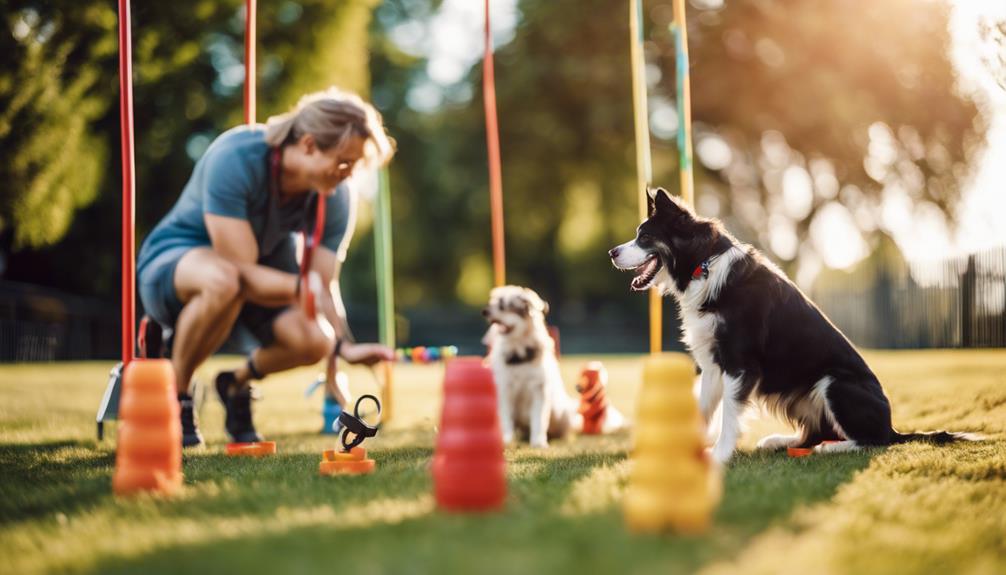For busy dog owners, finding effective training strategies can often feel overwhelming amidst a packed schedule. Short, focused training sessions of just 5-10 minutes can yield significant results, especially when paired with positive reinforcement techniques. However, implementing these methods while balancing daily responsibilities requires a thoughtful approach. Exploring practical tools and techniques can enhance the training experience for both owner and dog. What specific strategies can seamlessly integrate into your routine, ensuring that your dog receives the training they need without adding undue stress to your day?
Understanding Corgi Temperament
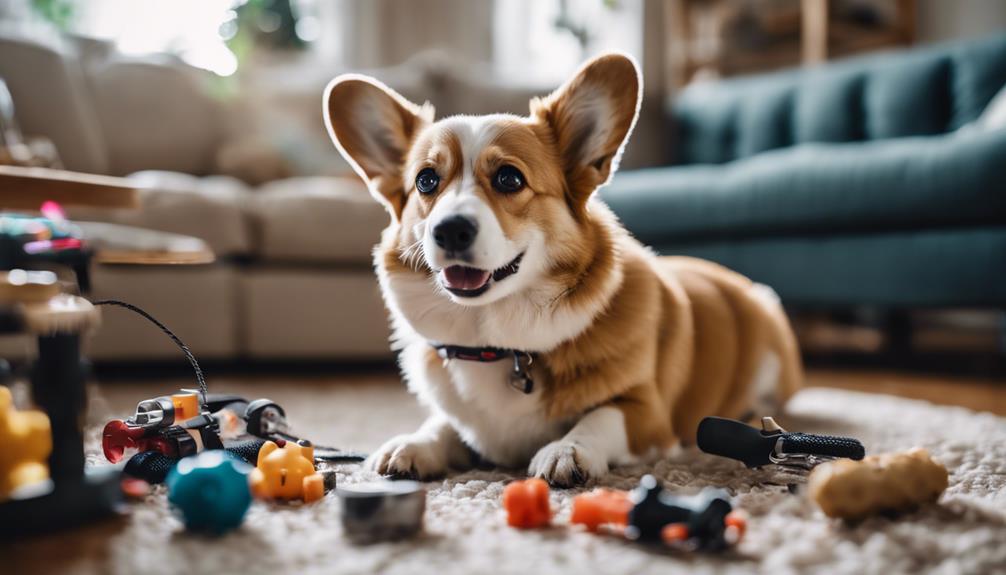
Corgis are known for their lively and affectionate temperament, characterized by intelligence, loyalty, and a playful nature. Understanding corgi behavior is essential for potential owners.
These dogs exhibit strong breed characteristics, including a keen sense of alertness and a high energy level, making them excellent companions. Corgis are naturally social animals, thriving on human interaction and companionship.
They often display a stubborn streak, stemming from their herding background, which can influence training.
Key points about corgi behavior include:
- Affectionate with family members
- Playful and energetic, requiring regular exercise
Recognizing these traits will help owners create a harmonious environment and establish effective communication with their corgis.
Setting Realistic Training Goals
Setting realistic training goals is crucial for successful dog training.
Start by identifying your priorities, focusing on what behaviors are most important for your dog to learn.
Once you have your priorities, break these goals down into smaller, manageable steps to ensure steady progress and maintain motivation.
Identify Your Priorities
Establishing clear and achievable training goals is essential for effective dog training, as it helps both the owner and the dog stay focused and motivated throughout the process.
Effective time management and priority setting are crucial in this context. Begin by identifying your most critical training objectives, such as basic obedience or socialization.
Consider what fits best into your schedule, ensuring that your goals are realistic given your available time. For example, if you can only dedicate ten minutes a day, focus on one command or behavior at a time.
Break Goals Down
Breaking down training goals into smaller, manageable steps enhances the likelihood of success and fosters consistent progress for both the dog and the owner.
Effective goal setting is essential for busy dog owners, as it allows for realistic expectations and achievable milestones. Start by identifying specific behaviors to work on, such as sit, stay, or leash walking, and focus on one at a time.
Consider the following strategies for effective time management:
- Allocate short, regular training sessions, ideally 5-10 minutes each.
- Schedule these sessions during daily routines, like before walks or meals.
Daily Training Time Blocks
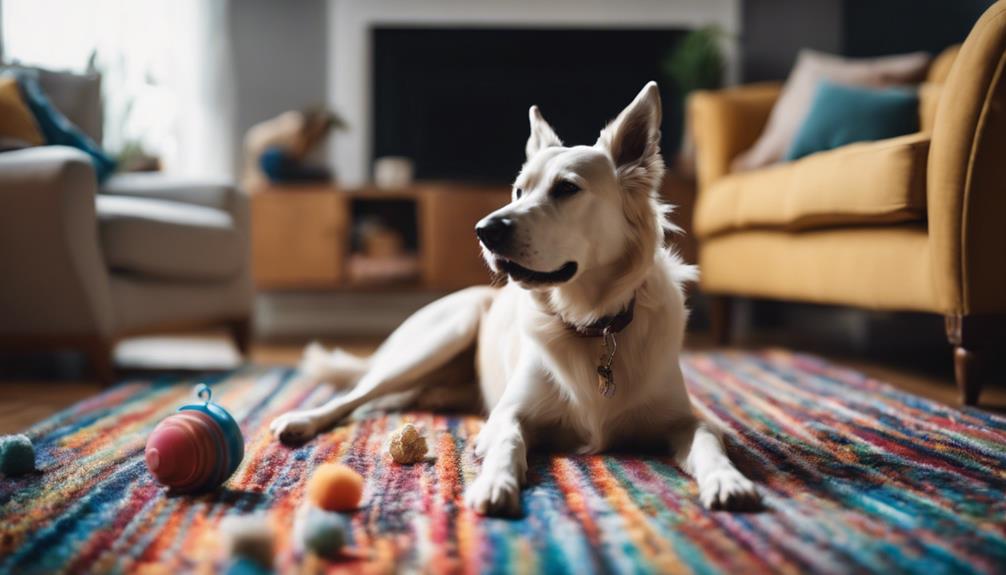
Establishing daily training time blocks is essential for effective dog training.
Short, focused sessions often yield better results than lengthy practices, and maintaining consistency in these training blocks is key.
Short Sessions, Big Results
Consistent, focused training sessions of just 5 to 10 minutes can yield significant improvements in your dog's behavior and responsiveness. For busy schedules, this approach allows you to incorporate short training into your daily routine without feeling overwhelmed.
Here are three key benefits of short training sessions:
- Enhanced Focus: Dogs can concentrate better during shorter sessions, leading to more effective learning.
- Frequent Reinforcement: Regular, brief training helps reinforce commands, making them easier for your dog to remember.
- Reduced Burnout: Short training intervals keep both you and your dog engaged, preventing fatigue and frustration.
Consistency Over Length
Prioritizing daily training time blocks fosters a stable learning environment that reinforces your dog's skills and behaviors more effectively than sporadic, lengthy sessions.
Establishing a consistent training routine helps create habit formation in your dog, making it easier for them to learn and retain commands. Aim for short, focused sessions of about 5 to 10 minutes each day. This approach ensures that your dog remains engaged and does not become overwhelmed.
Consider incorporating various activities during these sessions, such as practicing basic commands, reinforcing good behavior, or even engaging in interactive games.
Consistency is key; over time, your dog will associate these training blocks with positive experiences, leading to better results in their overall behavior and obedience.
Essential Commands to Teach
What fundamental commands should every dog owner teach to ensure effective communication and a harmonious relationship with their pet?
Training your dog to follow essential commands is vital for safety and obedience. Two of the most important commands are the sit command and the stay command. These commands help establish boundaries and promote good behavior.
Here are three essential commands every dog should learn:
- Sit Command: Teaches your dog to remain in a seated position until released, which can help manage excitement.
- Stay Command: Instructs your dog to remain in their current position, providing safety in various situations.
- Come Command: Encourages your dog to return to you, ensuring they stay close and safe during walks.
Teaching these commands fosters a positive owner-dog relationship.
Incorporating Play Into Training

Incorporating play into dog training can make the learning process enjoyable for both the dog and the owner.
Engaging in fun training games, utilizing toys effectively, and exploring outdoor play opportunities not only reinforce commands but also strengthen the bond between you and your pet.
Fun Training Games
Engaging in fun training games consistently enhances the learning experience for dogs while strengthening the bond between pet and owner.
Incorporating interactive play into training sessions makes learning enjoyable and effective.
Here are three exciting games to try:
- Hide and Seek: Teach your dog to find you by hiding and calling their name. This boosts their recall skills and is a fun bonding activity.
- Scent Games: Use treats and encourage your dog to sniff them out. This taps into their natural instincts and sharpens their sense of smell.
- Agility Challenges: Set up an obstacle course using items around your home. This promotes physical activity while reinforcing obedience through fun trick training.
These games not only provide entertainment but also foster essential skills in a playful manner.
Using Toys Effectively
Utilizing toys strategically during training sessions can significantly enhance a dog's learning experience and motivation.
Implementing effective toy selection strategies is key; choose toys that match your dog's interests and energy levels. For instance, squeaky toys or tug ropes can engage active dogs, while puzzle toys may stimulate those with a curious nature.
Interactive toy benefits include encouraging problem-solving skills and promoting physical activity, both of which are essential for a well-rounded dog.
Incorporating play into training can make sessions enjoyable, helping to maintain your dog's focus and enthusiasm.
Furthermore, reward-based training with toys reinforces positive behavior, making it easier for busy owners to achieve their training goals efficiently and effectively.
Outdoor Play Opportunities
Outdoor play offers a valuable setting for dog training, allowing owners to combine physical exercise with essential learning experiences.
Engaging in outdoor activities not only strengthens the bond between dog and owner but also makes training enjoyable.
Here are three effective ways to incorporate play into training:
- Fetch Games: Utilize fetch to teach commands like 'come' or 'drop it,' reinforcing obedience while providing exercise.
- Park Agility: Set up agility courses in local parks, using available equipment to enhance coordination and focus during training sessions.
- Interactive Play: Incorporate games like hide-and-seek, which can improve recall skills while keeping the dog mentally stimulated.
Using Positive Reinforcement
Positive reinforcement is a highly effective training method that encourages desired behaviors in dogs by rewarding them with treats, praise, or play. This approach is grounded in positive psychology, helping dogs associate good behavior with positive outcomes.
One popular technique within this method is clicker training, where a distinct sound signals to the dog that they have performed a desired action correctly. This sound, paired with a reward, strengthens the learning process.
Implementing reward systems can also enhance training; for instance, using a variety of rewards like toys or affection keeps your dog motivated. Consistency is key; ensure that rewards are given immediately after the desired behavior to help your dog make the connection. This fosters a positive learning environment.
Socialization Opportunities
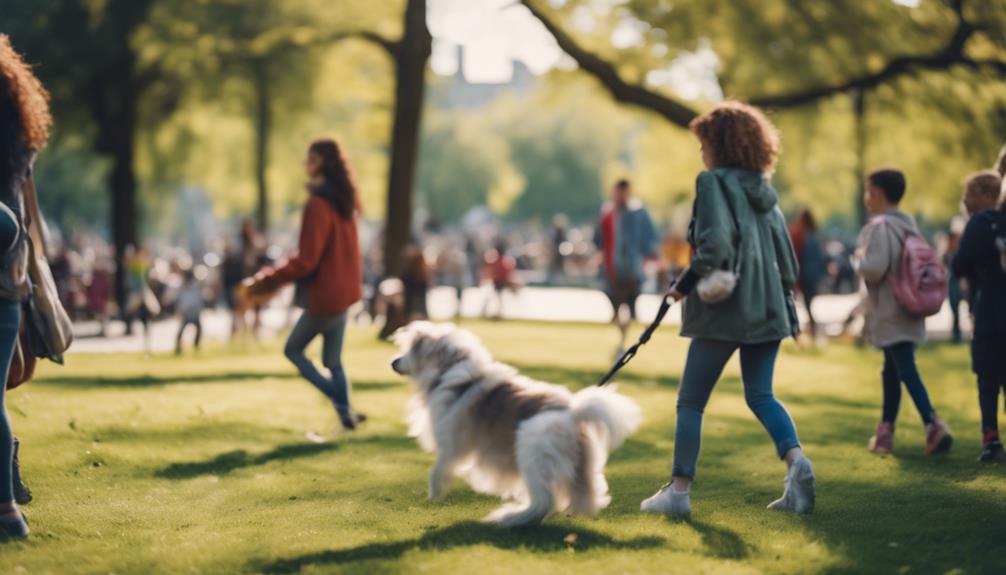
In addition to positive reinforcement, providing socialization opportunities is vital for a dog's overall development and well-being.
Socialization helps dogs learn to interact with other animals and people, reducing fear and anxiety. Busy dog owners can incorporate socialization into their routines through the following strategies:
- Dog Parks: These areas allow dogs to play freely with others, promoting exercise and social skills.
- Playdates: Arrange meetings with other dogs for supervised playtime, fostering friendships and positive interactions.
- Group Classes: Enroll in obedience or agility classes where dogs can socialize while learning essential skills.
Utilizing these opportunities not only enhances a dog's social abilities but also strengthens the bond between the dog and its owner, contributing to a happier, more balanced pet.
Managing Distractions Effectively
Effectively managing distractions is crucial for ensuring that dogs remain focused during training sessions and everyday activities.
Distraction techniques, such as gradually introducing new stimuli, can help dogs learn to concentrate despite their surroundings. Start with minimal distractions and slowly increase them as your dog becomes more confident. Focus exercises, like 'leave it' or 'watch me,' reinforce your dog's attention on you.
To build strong focus, practice in various environments, gradually increasing complexity.
- Begin in a quiet space.
- Progress to areas with more distractions, like parks.
- Use treats or toys to reward successful focus.
Training Tools for Busy Owners
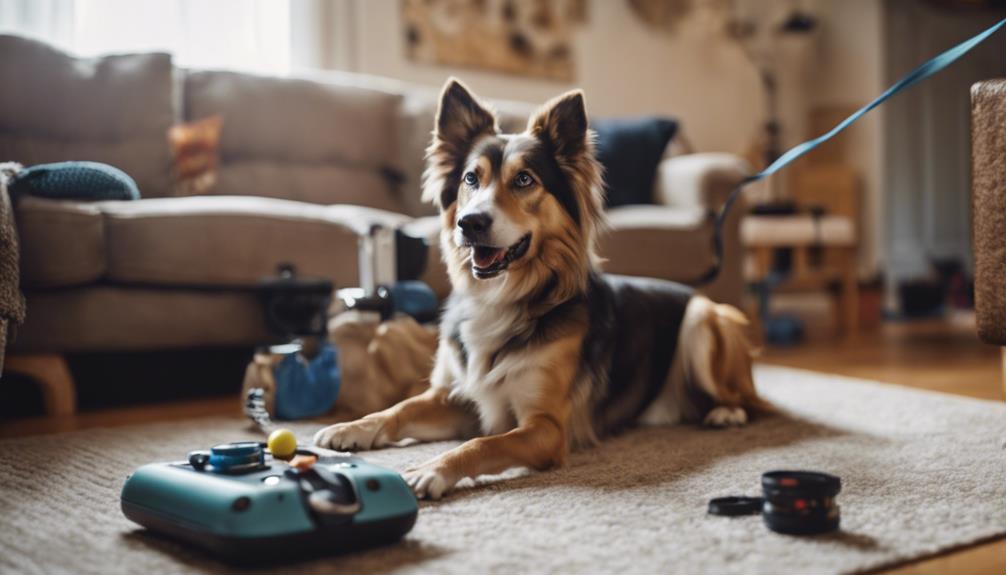
For busy dog owners, selecting the right training tools can streamline the training process and enhance communication with their pets. Effective tools can make training easier and more enjoyable, even for those with limited time.
Here are three essential training tools:
- Clicker Training: This method uses a small device to make a clicking sound when your dog performs a desired behavior, helping reinforce positive actions.
- Interactive Toys: These toys engage your dog mentally and physically, keeping them occupied while you manage daily tasks.
- Training Apps: Various apps provide structured training programs and reminders, making it easier to stay consistent with your dog's training schedule.
Incorporating these tools into your routine can significantly improve the training experience for both you and your dog.
Tracking Progress and Adjustments
Monitoring your dog's training progress and making necessary adjustments can significantly enhance their learning experience and ensure continued development.
Effective progress tracking involves regularly assessing your dog's skills and behaviors. This can be done through simple checklists or logs that record milestones achieved during training sessions.
Adjustment strategies are crucial when your dog struggles with specific commands or behaviors. For instance, if your dog seems confused by a command, consider simplifying your instructions or changing your approach. Additionally, vary training locations to reduce distractions.
Regularly reviewing your progress and making these adjustments will not only keep your dog engaged but also reinforce their learning.

